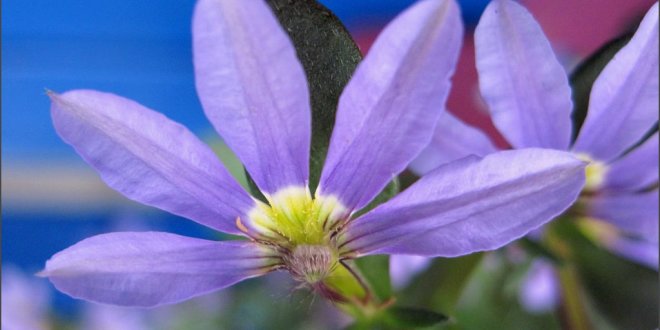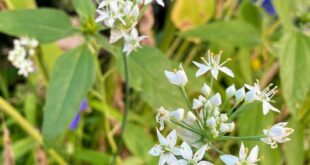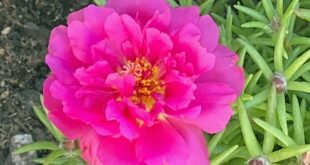Scaveola, or fairy fan-flower, is a tender perennial from eastern Australia. Although it is a relative newcomer to Sunnyvale gardens, scaveola is rapidly gaining converts as a beautifully flowering cascader for hanging baskets and mixed containers.
Description of scaveola: Scaveola has rounded basal leaves and narrower stem leaves on prostrate stems that reach only 6 to 8 inches high but grow 2 or more feet long. Blue or purple-blue flowers, shaped like folding, hand-held fans, emerge abundantly along the stems.
How to grow scaveola: Provide full sun and rich, well-drained garden soil. For potted plants, use an enriched, peat-based potting mix. Plant 8 inches apart. Keep containers evenly moist but allow garden beds to dry out slightly before watering again. Use a fertilizer rich in nitrogen and lacking phosphate (which can damage this plant), every few weeks. Scaveola, particularly ‘New Wonder,’ can survive temperatures into the low 100s and down to freezing.
Propagating scaveola: By cuttings. Take softwood cuttings in late spring.
Uses for scaveola: Let scaveola fill out an entire hanging basket with foliage and flowers or mingle it with other annuals in a mixed planter. You also can allow it to creep across the front of a garden like a ground cover or cascade over a retaining wall.
Details
Family: Goodeniaceae
Genus: Scaevola (skee-VO-luh) (Info)
Species: aemula (EM-yoo-luh) (Info)
Synonym:Scaevola saligna
Category: Annuals, Tropicals and Tender Perennials
Height: 6-12 in. (15-30 cm), 12-18 in. (30-45 cm)
Spacing: 18-24 in. (45-60 cm)
Hardiness: USDA Zone 10a: to -1.1 °C (30 °F), USDA Zone 10b: to 1.7 °C (35 °F), USDA Zone 11: above 4.5 °C (40 °F)
Sun Exposure: Full Sun, Sun to Partial Shade
Danger: N/A
Bloom Color: Blue-Violet
Bloom Time: Mid Summer, Late Summer/Early Fall, Blooms repeatedly
Foliage: Herbaceous
Other details: Average Water Needs; Water regularly; do not overwater
Soil pH requirements: 5.6 to 6.0 (acidic)
Patent Information: Non-patented
Propagation Methods: From herbaceous stem cuttings
Seed Collecting: Allow pods to dry on plant; break open to collect seeds
Read more: http://davesgarden.com/guides/pf/go/246/#ixzz3HhFgMv2z








